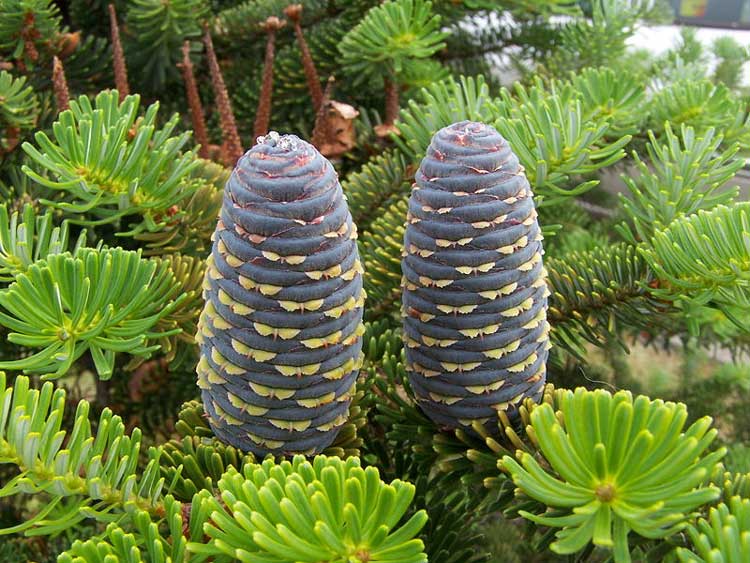Abies koreana (*) Cladus: Eukaryota Name Abies koreana E.H.Wilson Reference * Journal of the Arnold Arboretum. Cambridge, MA 1:188. 1920 Vernacular names ---------- Korean Fir (Abies koreana; 구상나무, Gusang namu in Korean) is a fir native to the higher mountains of South Korea, including Jeju-do island. It grows at altitudes of 1,000-1,900 m in temperate rain forest with high rainfall and cool, humid summers, and heavy winter snowfall. It is a small to medium-sized evergreen coniferous tree growing to 10-18 m tall with a trunk diameter of up to 0.7 m, smaller and sometimes shrubby at tree line. The bark is smooth with resin blisters and grey-brown in colour. The leaves are needle-like, flattened, 1-2 cm long and 2-2.5 mm wide by 0.5 mm thick, glossy dark green above, and with two broad, vividly white bands of stomata below, and slightly notched at the tip. The leaf arrangement is spiral on the shoot, but with each leaf variably twisted at the base so they lie mostly either side of and above the shoot, with fewer below the shoot. The shoots are green-grey at first, maturing pinkish-grey, with scattered fine pubescence. The cones are 4-7 cm long and 1.5-2 cm broad, dark purple-blue before maturity; the scale bracts are long, green or yellow, and emerge between the scales in the closed cone. The winged seeds are released when the cones disintegrate at maturity about 5–6 months after pollination. Korean Fir is a very popular ornamental plant in gardens in cool climates, grown for its foliage but also for the abundant cone production even on young trees only 1-2 m tall.
* Conifer Specialist Group (1998). Abies koreana. 2006. IUCN Red List of Threatened Species. IUCN 2006. www.iucnredlist.org. Retrieved on 11 May 2006. Source: Wikispecies, Wikipedia: All text is available under the terms of the GNU Free Documentation License |
|

